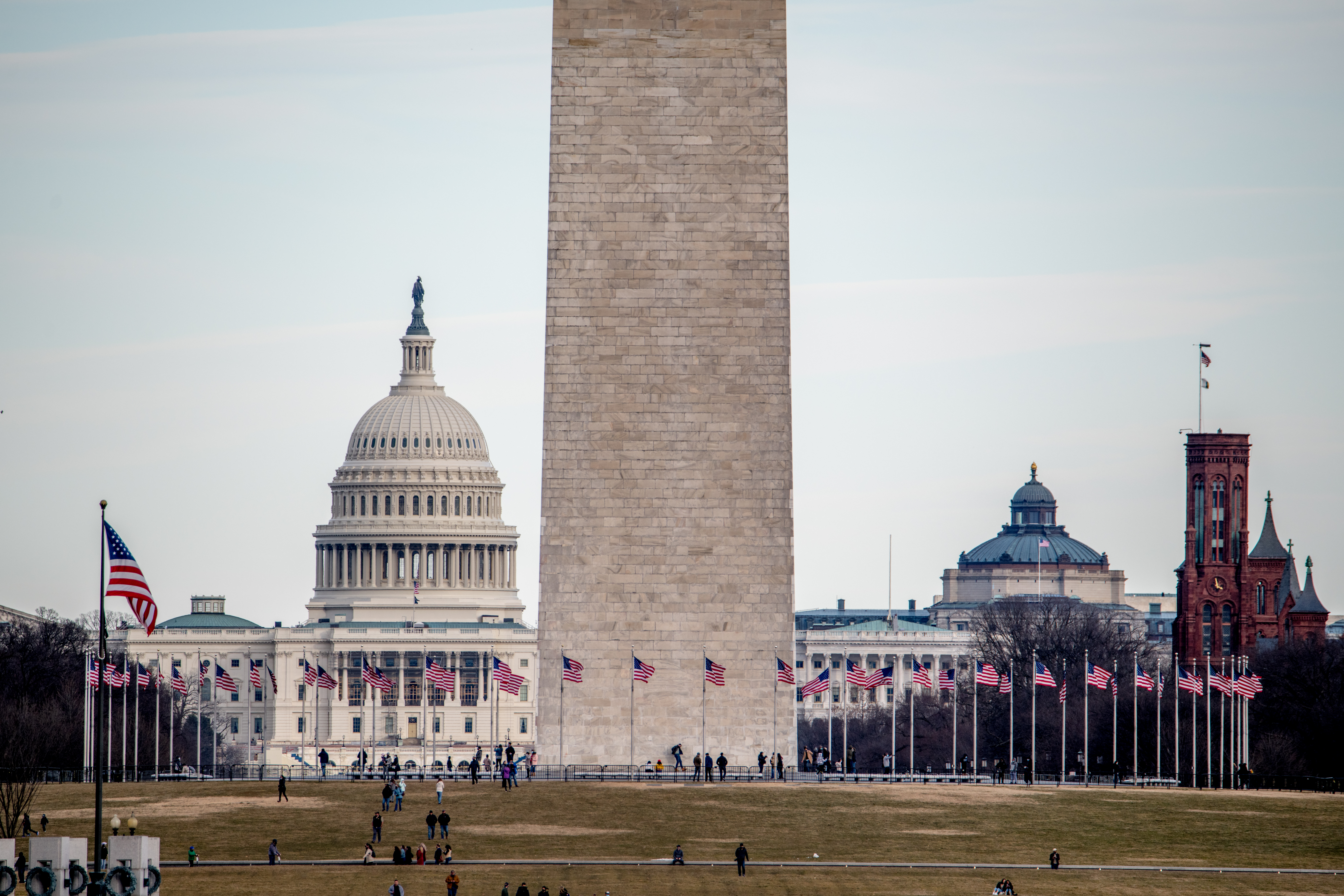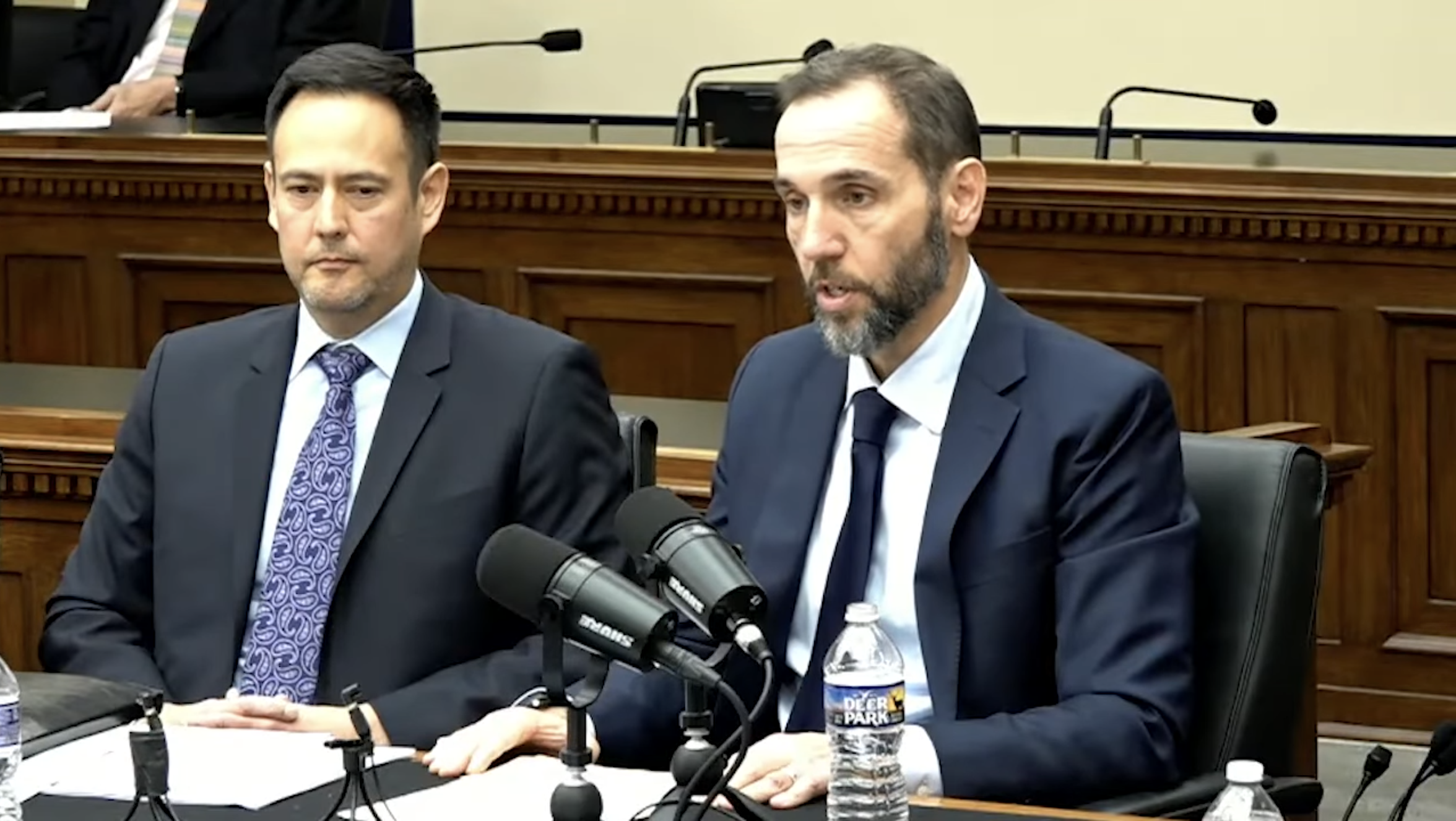The Successes and Limitations of the First Congressional Report on Jan. 6
The Senate Rules and Administration Committee and the Senate Homeland Security and Governmental Affairs Committee conducted a joint probe, and this week, they released their own joint report on the events of Jan. 6. The document is both a useful record and profoundly incomplete.

Published by The Lawfare Institute
in Cooperation With

During the days following the attempted insurrection on Jan. 6, with both Democrats and Republicans condemning the riot, it seemed possible—even likely—that Congress might authorize a broad bipartisan investigation of what happened to foster the violence that day. Five months later, though, that hope feels distant. On May 28, the Senate failed to break a filibuster to create an independent commission on the causes of the riot, and overall, the outlook for a robust, definitive investigation seems grim.
In the absence of an outside inquiry, Congress has pursued a variety of investigative approaches. Individual House committees have begun investigations, and Speaker of the House Nancy Pelosi may decide that the best way forward is simply to have those panels continue that work. She has also floated forming a select committee to investigate the attack or designating one specific panel to take the lead in the inquiry. But whatever Pelosi supports, it will likely face opposition from House Republicans.
For the Senate’s part, the strategy has been clearer from the start: the Senate Rules and Administration Committee and the Senate Homeland Security and Governmental Affairs Committee conducted a joint probe, and this week, they released their own joint report on the events of Jan. 6. The report is the first public document produced by committees in either chamber of Congress investigating the riot—and it may yet be the only one. Elsewhere on Lawfare, Billy Ford has provided an in-depth summary of the document. Here, we take a look at what the report does and doesn’t cover, and what those gaps say about our understanding of what happened on Jan. 6.
The document goes deep on what went wrong on Jan. 6—but it’s less deep on the question of why things went wrong. It’s focused on a relatively narrow timeframe, digging into how various agencies and the congressional bureaucracy fumbled the ball in the weeks before Jan. 6 and on the day itself. But it doesn’t broaden its scope to examine the structural factors that might have led those organizations to fumble the ball, or examine the role of President Trump in whipping up rioters through his lies about a stolen election. Some of these limitations likely stem from the bipartisan nature of the report: Republicans, reporting from the New York Times and Washington Post suggests, were none too eager to delve into Trump’s responsibility for the violence. And other limitations trace back to the fact that this report is the product of an investigation by only one chamber of Congress, with limited cooperation from key actors in the House of Representatives.
The document, in other words, is both a useful record—and profoundly incomplete.
The committees sketch out a grim picture of the cascading institutional failures both within and beyond Congress. The failures within the congressional bureaucracy laid out by the report are several—and began even before Jan. 6. The U.S. Capitol Police (USCP) did not, the report makes clear, effectively use the intelligence gathered by its three intelligence-related components to track the threat to the Capitol Complex. The report identifies sharing intelligence information as a particular weak spot, both within and beyond the USCP. The entity with primary responsibility for distributing intelligence reports, the Intelligence and Interagency Coordination Division (IICD), produced conflicting products prior to Jan. 6, and some key information—including a now-famous bulletin sent out from the FBI’s Norfolk field office on Jan. 5, noting internet posts describing potential violence the next day did not make its way to all relevant parties within the USCP.
Intelligence agencies other than the Capitol Police also failed to communicate the seriousness of a potential attack—even as the planning for that attack was happening, in part, in plain sight on social media. The bulletin from the FBI’s Norfolk field office appears to be the only intelligence document produced by the bureau warning of the danger. The Department of Homeland Security, which has its own intelligence analysis arm, meanwhile, never produced any document flagging the potential violence.
The committees seem to be keenly aware of just how absurd it is for executive agencies to claim ignorance of threats posted prominently online. The report quotes one official at the Department of Homeland Security’s Intelligence & Analysis unit saying that he was “not aware of any known direct threat to the Capitol before January 6,” before dryly noting that this was “despite many online posts mentioning violence.
The report also details failures by the USCP to develop sufficient operational and staffing plans for Jan. 6, as well as inadequate training and equipment for officers. On Jan. 6 itself, the report details, there were significant communication failures within the USCP, with rank-and-file officers “receiv[ing] little-to-no communication from senior officers during the attack and at no point did USCP leadership take over the radios to communicate with front-line officers.”
But the failures outlined in the report are not limited to the USCP. Among the most troubling sections of the report is the discussion of why it took as long as it did for National Guard troops to arrive at the Capitol after USCP requested support. The members of the Capitol Police Board, the reports states bluntly, “did not understand the statutory and regulatory authorities of the Capitol Police Board.”
Michael Stenger, the former Senate Sergeant-at-Arms, described the board as a “clearinghouse of information” rather than as an “operational” body—despite the fact that the board has responsibility for important operational decisions. The board may request support from executive departments and agencies—including the National Guard—but “none of the Capitol Police Board members on Jan. 6 could fully explain in detail the statutory requirements for requesting National Guard assistance” and “there was no formal process for such requests.” Board members’ confusion about the process extended to uncertainty about how many of their votes were required to approve such a request. Stenger asserted that unanimity was needed, while Architect of the Capitol J. Brett Blanton (with whom the possibility of requesting Guard support prior to Jan. 6 was not discussed) posited that only a majority vote was necessary. (Notably, the report itself does not clarify the answer to this question, but among its recommendations is to empower the USCP chief to make independent requests for Guard assistance in emergencies.)
The report outlines how lack of clarity between the Defense Department and the Capitol Police over the procedures for requesting deployment of the Guard contributed to the crucial delays in the Guard’s arrival on the scene—and confusion and delays at the Pentagon resulted in a three-hour gap between when Capitol Police first requested the deployment of the Guard and when the Guard actually showed up at the Capitol. And excerpts from committee interviews with Christopher Miller, the acting secretary of defense on Jan. 6, and Ryan McCarthy, secretary of the Army on that date, suggest that the Pentagon was skittish about deploying military forces to the Capitol after the debacle of the National Guard deployment to Washington, D.C. in summer 2020 to respond to the protests over George Floyd’s death.
Meanwhile, the Justice Department, despite having been designated by the White House as the lead agency in charge of coordinating operations to secure Congress that day, appears to have been almost entirely absent from security planning or response. According to one Pentagon official interviewed by the committees, the department failed to “conduct any interagency rehearsals or have an integrated security plan, as DOJ did during the summer 2020 protests when it had also been designated as the lead federal agency.” Former Acting Defense Secretary Miller told the committees that he convened calls between agencies in the midst of the chaos because the Justice Department was nowhere to be found: “[S]omebody needed to do it.” This failure is all the more notable because the Justice Department itself denied to the committees that it was ever placed in charge—and, according to the report, “has yet to fully comply with the Committees’ requests for information.”
So the report provides a damning account of security and intelligence failures across the board. But there’s also a lot that the document does not do. In emphasizing the immediate period leading up to Jan. 6, it does not discuss a longer history of what created the conditions that allowed for the operational failures. The report does quote one USCP officer as observing that “1/6 was not only a result of a few months of intelligence not being analyzed and acted upon, but more so decades of failing to take infrastructure, force protection, emergency planning, and training seriously.” But the report does not address how the USCP was allowed to fall short for those decades. Is a lack of congressional oversight to blame— and, if so, what changes to Congress’s own approach to holding its security bureaucracy accountable are needed? The report offers no answers to those important questions.
It is also telling that the report stops short of recommending a full restructuring of the Capitol Police Board, despite previous efforts and recent bipartisan interest in doing so. It is widely believed that congressional leaders—who nominate two of the members of the board, the House and Senate Sergeants-at-Arms, to their positions—are reluctant to change the force’s governance structure. But as Congress moves forward, it must consider whether the current bureaucratic arrangements are the most effective ones for ensuring the Capitol Hill community is safe, for the thousands of members and staff who report to work there each day.
And the report demonstrates the inherent shortcomings of an investigation done by, and recommendations for reform made by, committees in a single chamber of Congress. Take, for example, the relatively brief discussion of shortcomings in the security notifications received by senators and Senate staff. “Primary responsibility for security notifications to Senators and Senate staff,” the report notes, “resides with the Senate SAA”—who did not send any Senate-wide email alerts during the attack itself. The USCP’s email notifications were more numerous, but more than half of them were sent prior to the breach of the Capitol; the USCP also sent the same message, directing individuals to shelter in place, four times between 2:18 pm and 6:44 pm without adding any additional information or context. The report is silent, however, on the experience of House members and staff with House-specific communications. Indeed, while the House Sergeant-at-Arms office is included on the list of entities from which “current and former officials" participated in interviews as part of the probe, the office itself did not comply with the Senate committees’ request for information.
While the report is damning in its description of how the intelligence agencies did not effectively seek out and use intelligence in advance of the riot, it doesn’t provide answers to some of the obvious questions that arise from that description. Why, for example, was the bulletin from the Norfolk field office the only document the FBI produced warning of danger on Jan. 6?
Or, take the statement by then-FBI Assistant Director Jill Sanborn, quoted in the report, that the FBI was not aware of threats made on social media before Jan. 6 because “we cannot collect First Amendment-protected activities” in the absence of a preexisting investigation. When Sanborn made this comment at a Mar. 2 Senate hearing, it was the subject of a great deal of skepticism from commentators familiar with the FBI’s investigatory practices. And indeed, internal FBI guidelines state that “FBI employees may conduct Internet searches of ‘publicly available information’”—the definition of which would include public social media posts—“prior to the initiation” of a formal investigation. But the Senate report quotes Sanborn without addressing this discrepancy or explaining what the bureau’s authorities actually are when it comes to monitoring online posts, even though this would seem to be an important factor in understanding the FBI’s failure to prepare for Jan. 6.
This points to another, deeper hole in the committees’ analysis. The report discusses egregious failures by various agencies, but it doesn’t examine the larger structural factors that created an environment where those failures could take place. Why might it be that the FBI, Department of Homeland Security and Capitol Police were so willing to discount the potential threat posed by a group of largely white Trump supporters—especially compared to the federal government’s aggression toward peaceful Black Lives Matter protestors during the summer of 2020? To what extent did they overlook that danger because they did not want to cross the president? For that matter, to what extent was the Justice Department’s strange silence during the riot itself a result of the department’s desire to placate the president?
These questions will be difficult to answer without a more sustained inquiry into, among other things, the role of Trump and the White House in the events surrounding Jan. 6. And that hurdle may be exactly why they aren’t addressed in this report. The document is a product of a bipartisan investigation by two Senate committees—and according to the New York Times, that bipartisanship shaped what the committees did and didn’t include. As the Times notes, the report “does not chart [Trump’s] actions or motivations, state that his election claims were false or explore the implications of a president and elected leaders in his party stoking outrage among millions of supporters." This explains one of the odder design choices in the report’s presentation: Trump’s remarks at the Ellipse immediately preceding the riot—“And we fight. We fight like hell. And if you don't fight like hell, you're not going to have a country anymore.—are included in an appendix at the end of the report, but they are not discussed at any length in the body of the document. They are referenced with little detail as part of the timeline of events; “President Trump began his address just before noon,” the report notes, and “during the next 75 minutes, the President continued his claims of election fraud and encouraged his supporters to go to the Capitol. Essentially, the report just tries to stay as far away from Trump as possible—a tricky task when chronicling a riot that the president sparked with his rhetoric and which he egged on while it was happening.
Given these unanswered questions, Congress must decide what to do next. The Senate committees that produced this report have pledged to keep investigating, including “continu[ing] to pursue responses” from the agencies, offices, and individuals who did not cooperate with the committees’ prior requests. But recent experience shows that recalcitrant actors can effectively slow walk committees’ efforts to obtain information.
The lack of full cooperation from the House Sergeant-at-Arms also illustrates the need for the House to continue its own inquiry. Up to now, this investigative work has involved hearings by four separate panels (the Legislative Branch subcommittee of the Committee on Appropriations; the Committee on Oversight and Reform; the Committee on Homeland Security; and the Committee on House Administration) and letters sent singly or jointly by these committees and five more (House Intelligence; House Judiciary; House Armed Services; and the Subcommittees on the Department of Defense and on Interior, Environment and Related Agencies of the House Appropriations Committee). The dispersed nature of the House’s investigation—particularly in contrast to the joint committee nature of the Senate’s—is one reason many have pushed for Pelosi to create a select panel in the House to serve as focal point for the inquiry. These calls have intensified in the wake of Senate Republicans tanking legislation to create an independent commission to investigate the insurrection to advance in the Senate.
While supporters of a commission have made clear that this report is not a substitute for an independent inquiry, getting one approved will remain a steep uphill battle. Senate Majority Leader Mitch McConnell took the occasion of the report’s release to reiterate his opposition to such an inquiry, saying that he was “confident in the ability of existing investigations to uncover all actionable facts about the events of Jan. 6.” The Senate report does show that existing congressional committees are capable of serious investigation and reflection on what happened on Jan. 6—but it also demonstrates the limitations of those investigations as they currently stand.






